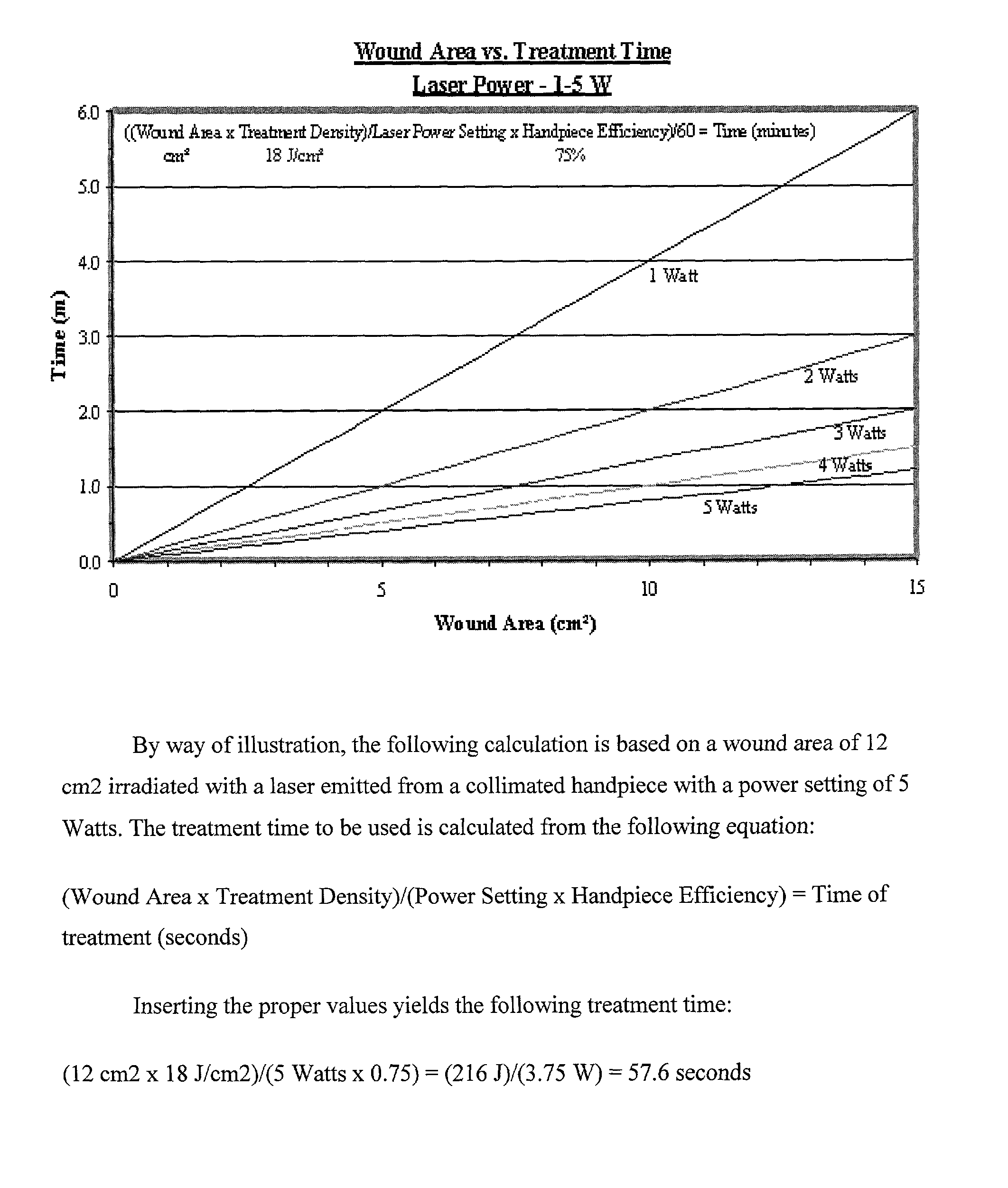Device and method for wound healing and debridement
- Summary
- Abstract
- Description
- Claims
- Application Information
AI Technical Summary
Benefits of technology
Problems solved by technology
Method used
Image
Examples
example 2
[0040] Example 2
[0041] An example of the effectiveness of the present invention is realized in a study done on the healing effects of high-powered laser treatment on mice, which demonstrates the effectiveness of high-powered laser wound treatment.
[0042] A group of 75 diabetic mice were used, which was divided into 5 subgroups of 15 mice, depending on the frequency of the treatment and power used. The five subgroups consisted of mice that received 980 nm laser treatment at 5 Watts every 2 days, 5 Watts every 4 days, 10 Watts every 2 days, 10 Watts every 4 days, and control group which were wounded but received no laser treatment. (Problem with 10 Watt: hair regrew around the edge of the wound, and when 10 W laser was applied, the hair caught fire. This may have affected the results of the 10 W treatment.)
[0043] The mice were anesthetized, and their dorsum shaved and cleansed. Then, two full-thickness circular wounds were created on the back of each mouse, using a skin punch biopsy in...
example 3
[0047] Example 3
[0048] The following is an example of a preferred treatment method, which can be used to treat a foot or lower leg ulcer. In this example, the patient receives weekly treatments for up to eight weeks or until the wound is completely or substantially closed.
[0049] Upon arrival of the patient, a physical examination of the affected area is performed, assessing characteristics such as protective sensation in the foot and vascular status. The depth and surface area of the wound is measured. The wound is then cleansed and laser treatment is commenced.
[0050] In this suggested method, a collimating handpiece is used in conjunction with a mechanical debriding apparatus such as a scalpel. Laser energy is applied in a 90-degree crosshatch pattern to insure complete wound coverage. An energy density of 18 J / cm.sup.2 is used, and applied using variable power settings and treatment times as prescribed in the following graph. These power settings and treatment times prescribed in ...
PUM
 Login to View More
Login to View More Abstract
Description
Claims
Application Information
 Login to View More
Login to View More - R&D
- Intellectual Property
- Life Sciences
- Materials
- Tech Scout
- Unparalleled Data Quality
- Higher Quality Content
- 60% Fewer Hallucinations
Browse by: Latest US Patents, China's latest patents, Technical Efficacy Thesaurus, Application Domain, Technology Topic, Popular Technical Reports.
© 2025 PatSnap. All rights reserved.Legal|Privacy policy|Modern Slavery Act Transparency Statement|Sitemap|About US| Contact US: help@patsnap.com

